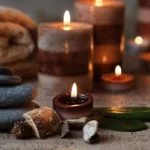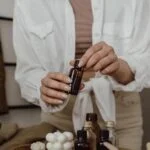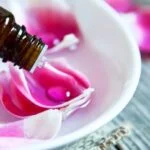Peppermint essential oil is a popular choice in aromatherapy, known for its refreshing and invigorating scent. In this article, we will explore the benefits and uses of peppermint essential oil in aromatherapy, as well as provide a step-by-step guide on how to make your own DIY peppermint essential oil at home.
From relieving headaches to promoting respiratory health, peppermint essential oil offers a wide range of therapeutic effects. Additionally, we will discuss precautions and safety measures when using this powerful essential oil, along with tips for choosing the right peppermint oil for your aromatherapy needs.
Peppermint essential oil has been used for centuries for its medicinal properties and aromatic benefits. It is derived from the leaves of the peppermint plant through a process of steam distillation, resulting in a highly concentrated oil with a fresh and minty aroma. In addition to its pleasant scent, peppermint essential oil is prized for its ability to alleviate headaches, promote digestion, and soothe respiratory issues. Its versatile nature makes it a valuable addition to any aromatherapy routine.
When it comes to selecting peppermint essential oil for aromatherapy, purity and quality are crucial factors to consider. We will provide tips on how to choose high-quality peppermint essential oil and discuss the importance of sourcing from reputable suppliers.
Furthermore, we will delve into the process of making your own peppermint essential oil at home, offering insight into the equipment needed and extraction methods. Whether you are new to aromatherapy or an experienced practitioner, this article will guide you through the fascinating world of using peppermint essential oil for health and wellness.
Health Benefits of Peppermint Essential Oil
Peppermint essential oil is a versatile and popular choice in aromatherapy due to its wide range of health benefits. This section will delve into the specific advantages of using peppermint essential oil for various health concerns, as well as how to properly utilize it for optimal results.
One of the most well-known benefits of peppermint essential oil is its ability to alleviate headaches and migraines. The cooling sensation produced by the menthol component in peppermint oil can help relax tense muscles and reduce discomfort. When used in aromatherapy, inhaling the invigorating aroma of peppermint oil may provide relief from tension headaches and promote a sense of clarity.
In addition to its headache-relieving properties, peppermint essential oil is also valued for its potential to ease nausea and improve digestion. The soothing properties of this oil can be attributed to its ability to relax the smooth muscles in the stomach and intestinal tract.
Inhalation or topical application of diluted peppermint essential oil may help calm an upset stomach or reduce feelings of queasiness. Furthermore, it has been suggested that diffusing peppermint essential oil during travel can help combat motion sickness effectively.
Lastly, peppermint essential oil is often utilized in aromatherapy practices for respiratory issues such as congestion and sinusitis. The strong, minty aroma of peppermint oil can act as a natural decongestant when inhaled, providing relief from nasal congestion and promoting easier breathing. Its expectorant properties may also help clear mucus from the airways when used in steam inhalation or chest rubs. This makes it a valuable tool for managing symptoms associated with colds, allergies, or respiratory infections.
| Health Concern | Benefit of Peppermint Essential Oil |
|---|---|
| Headaches | Provides relief from tension headaches and migraines. |
| Nausea & Digestion | Aids in calming an upset stomach and reducing feelings of queasiness. |
| Respiratory Issues | Acts as a natural decongestant to relieve nasal congestion and promote easier breathing. |
Overall, incorporating peppermint essential oil into your aromatherapy routine can be beneficial for addressing these common health concerns effectively. By understanding how to use this versatile essential oil safely and appropriately, individuals can experience its therapeutic effects while enhancing their well-being.
Choosing the Right Peppermint Oil
Peppermint essential oil is a popular choice for aromatherapy, known for its refreshing and invigorating scent. When it comes to choosing the right peppermint oil for aromatherapy, there are several factors to consider to ensure you’re getting a high-quality product that will provide maximum benefits. Here are some tips for selecting the best peppermint essential oil:
- Check the Purity: Look for 100% pure peppermint essential oil with no additives or synthetic ingredients. Pure oils will offer the full range of therapeutic benefits and potency.
- Consider Sourcing: Pay attention to where the peppermint oil is sourced from. Oils sourced from reputable regions known for their high-quality plant material, such as the Pacific Northwest in the United States, are generally preferred.
- Look for Organic: Organic peppermint essential oil is free from pesticides and other harmful chemicals, making it a safer and more natural option for aromatherapy use.
When it comes to choosing the right peppermint essential oil for aromatherapy, purity and sourcing play a crucial role in ensuring you get a quality product that delivers all the therapeutic benefits this versatile oil has to offer.
It’s important to remember that not all essential oils are created equal, so taking the time to select a high-quality peppermint oil will ultimately enhance your aromatherapy experience and promote overall wellness. By following these tips, you can make an informed decision when purchasing peppermint essential oil for your aromatherapy needs.
Precautions and Safety Measures
Important Safety Guidelines
When using peppermint essential oil in aromatherapy, it is important to follow certain safety guidelines to avoid any adverse effects. One of the most crucial precautions is to always dilute the essential oil before applying it to the skin. Peppermint oil is highly concentrated and can cause skin irritation if used undiluted. It is recommended to use a carrier oil such as coconut or almond oil to dilute the peppermint essential oil before applying it to the skin.
Potential Side Effects and Contraindications
While peppermint essential oil offers numerous health benefits, there are potential side effects and contraindications to be aware of. In some individuals, peppermint oil may cause allergic reactions or skin sensitization. It is important to perform a patch test on a small area of skin before using the oil more extensively. Additionally, individuals with certain health conditions such as liver disease or gallbladder issues should consult a healthcare professional before using peppermint essential oil.
Safe Usage for Children and Pets
When using aromatherapy with peppermint essential oil in a household with children or pets, extra caution should be taken. Peppermint oil should never be ingested by children or pets, as it can be toxic if consumed in large quantities.
Furthermore, it is advisable to keep diffusers out of reach of pets and ensure proper ventilation when diffusing peppermint essential oil in a shared space. Taking these precautions will help ensure the safe and effective use of peppermint essential oil for aromatherapy purposes.
DIY Aromatherapy Peppermint Essential Oil
Peppermint essential oil is a versatile and popular choice in aromatherapy due to its wide range of benefits, including its ability to alleviate headaches, reduce nausea, and help with respiratory issues. While it can be easily purchased from various retailers, making your own peppermint essential oil at home can be a rewarding and cost-effective endeavor. Here’s how to make aromatherapy peppermint essential oil:
Materials Needed
- Fresh peppermint leaves
- Carrier oil (such as olive oil or almond oil)
- Mortar and pestle
- Glass jar with lid
- Cheesecloth
- Dark glass bottle for storage
Process of Extraction
- Begin by washing and thoroughly drying the fresh peppermint leaves to remove any dirt or impurities.
- Using a mortar and pestle, gently crush the peppermint leaves to release their natural oils.
- Place the crushed leaves in a glass jar and cover them with the carrier oil, ensuring that the leaves are completely submerged.
- Seal the jar tightly and place it in a warm, sunny location for 1-2 weeks, shaking it gently every day to help infuse the oil with the minty aroma.
- After the infusion period, strain the oil through a cheesecloth into a dark glass bottle for storage, ensuring that all plant material is removed.
Making your own aromatherapy peppermint essential oil allows you to control the quality and purity of the final product while also providing a sense of satisfaction in creating your own natural remedy.
By following these steps on how to make aromatherapy peppermint essential oil at home, you can enjoy the benefits of this invigorating and refreshing essential oil while gaining an appreciation for the art of natural DIY remedies.
Aromatherapy Recipes With Peppermint Essential Oil
Peppermint essential oil is a versatile and popular choice for aromatherapy due to its refreshing and invigorating scent. It can be used in a variety of ways, from diffuser blends to massage oils and room sprays. When creating aromatherapy recipes with peppermint essential oil, it is important to consider the desired effect and the specific benefits of this essential oil.
One simple recipe using peppermint essential oil is a basic room spray. To make this, mix 10-15 drops of peppermint essential oil with water in a spray bottle. Shake well before each use and spritz the room as needed. This can help create a refreshing and energizing atmosphere, perfect for boosting focus or combating feelings of fatigue.
Another popular use for peppermint essential oil is in massage oils. When creating a massage blend, it’s important to dilute the peppermint essential oil properly to avoid skin irritation. A safe dilution ratio is around 2-3 drops of peppermint essential oil per ounce of carrier oil, such as sweet almond or jojoba oil. This blend can then be used for invigorating massages, especially after physical activity.
For those who enjoy using a diffuser, there are numerous blends that incorporate peppermint essential oil. One particularly effective blend includes equal parts of peppermint, lavender, and eucalyptus essential oils. This combination can help alleviate respiratory issues and provide relief from congestion or seasonal discomforts.
Incorporating these aromatherapy recipes into your routine can offer both physical and emotional benefits, making peppermint essential oil an excellent choice for those looking to enhance their well-being through natural remedies.
| Aromatherapy Recipe | Ingredients |
|---|---|
| Basic Room Spray | Peppermint Essential Oil + Water |
| Massage Oil Blend | Peppermint Essential Oil + Carrier Oil (e.g. sweet almond or jojoba) |
| Diffuser Blend | Peppermint Essential Oil + Lavender Essential Oil + Eucalyptus Essential Oil |
Tips for Using Peppermint Essential Oil in Aromatherapy
Using peppermint essential oil in aromatherapy can provide numerous benefits for both the mind and body. Whether you are looking to alleviate headaches, improve respiratory function, or simply enjoy the refreshing scent, there are several ways to incorporate this versatile oil into your daily routine. Below are some helpful tips for using peppermint essential oil in aromatherapy.
Best Practices
When using peppermint essential oil for aromatherapy, it is important to dilute the oil properly to avoid skin irritation. A common dilution ratio is 2-3 drops of peppermint essential oil per teaspoon of carrier oil, such as jojoba or coconut oil. Additionally, always perform a patch test on a small area of skin before applying the diluted oil to larger areas of the body. This will help ensure that you do not have an adverse reaction to the oil.
Application Methods
There are several effective ways to use peppermint essential oil in aromatherapy. Inhalation is one popular method, where a few drops of the oil are added to a bowl of hot water and then inhaled deeply.
You can also add a few drops of peppermint essential oil to a diffuser to fill your living space with its invigorating aroma. Alternatively, combining the oil with a carrier oil makes for an excellent massage blend and can be applied topically to specific areas for targeted relief.
Recommended Blends
For those new to aromatherapy, it can be helpful to start with simple blends using peppermint essential oil. One popular combination is blending peppermint with lavender and eucalyptus oils for a refreshing and calming scent that can help promote relaxation and clear sinuses. Another option is mixing peppermint with citrus oils like lemon or orange for an uplifting and energizing aroma that can help boost mood and focus.
Incorporating these tips into your use of peppermint essential oil in aromatherapy can enhance your overall experience and allow you to fully enjoy the benefits that this powerful natural remedy has to offer.
Conclusion
In conclusion, peppermint essential oil is a powerful and versatile tool for aromatherapy, offering a wide range of health benefits and practical uses. Whether it’s to alleviate headaches, reduce nausea, or improve respiratory issues, this essential oil has been relied upon for its natural healing properties for centuries. Additionally, the ability to create your own DIY peppermint essential oil at home allows for a customizable and sustainable approach to aromatherapy.
By following the step-by-step guide on how to make aromatherapy peppermint essential oil, individuals can ensure that they are using a high-quality and pure product in their aromatherapy routines. It’s important to carefully select the right peppermint oil and consider safety precautions when using it in aromatherapy applications. Ultimately, with the appropriate knowledge and care, anyone can experience the many benefits of incorporating peppermint essential oil into their wellness regimen.
In closing, whether you are new to aromatherapy or a seasoned enthusiast, peppermint essential oil is a valuable addition to any collection of essential oils. From diffuser blends to massage oils and room sprays, there are numerous ways to enjoy the refreshing and invigorating scent of peppermint while reaping its countless health benefits. Dare to explore the world of aromatherapy with peppermint essential oil and discover how it can enhance your overall well-being.
Frequently Asked Questions
Can I Make My Own Peppermint Essential Oil?
It is possible to make your own peppermint essential oil at home, although the process can be quite involved. The basic method involves crushing peppermint leaves and then using a distillation process to extract the essential oil.
How Do You Extract Essential Oils From Peppermint?
The most common method of extracting essential oils from peppermint is through steam distillation. This process involves placing fresh peppermint leaves in a container and then passing steam through them. The steam causes the oil to evaporate and then it is collected and condensed into a separate container.
How Do You Use Peppermint Oil for Aromatherapy?
Peppermint oil can be used for aromatherapy by adding a few drops to a diffuser or vaporizer, which then disperses the oil into the air. It can also be diluted with a carrier oil and applied to the skin, either through massage or by adding it to bathwater for a soothing effect.

Are you looking for a natural way to improve your health and wellbeing?
If so, aromatherapy may be the answer for you.





